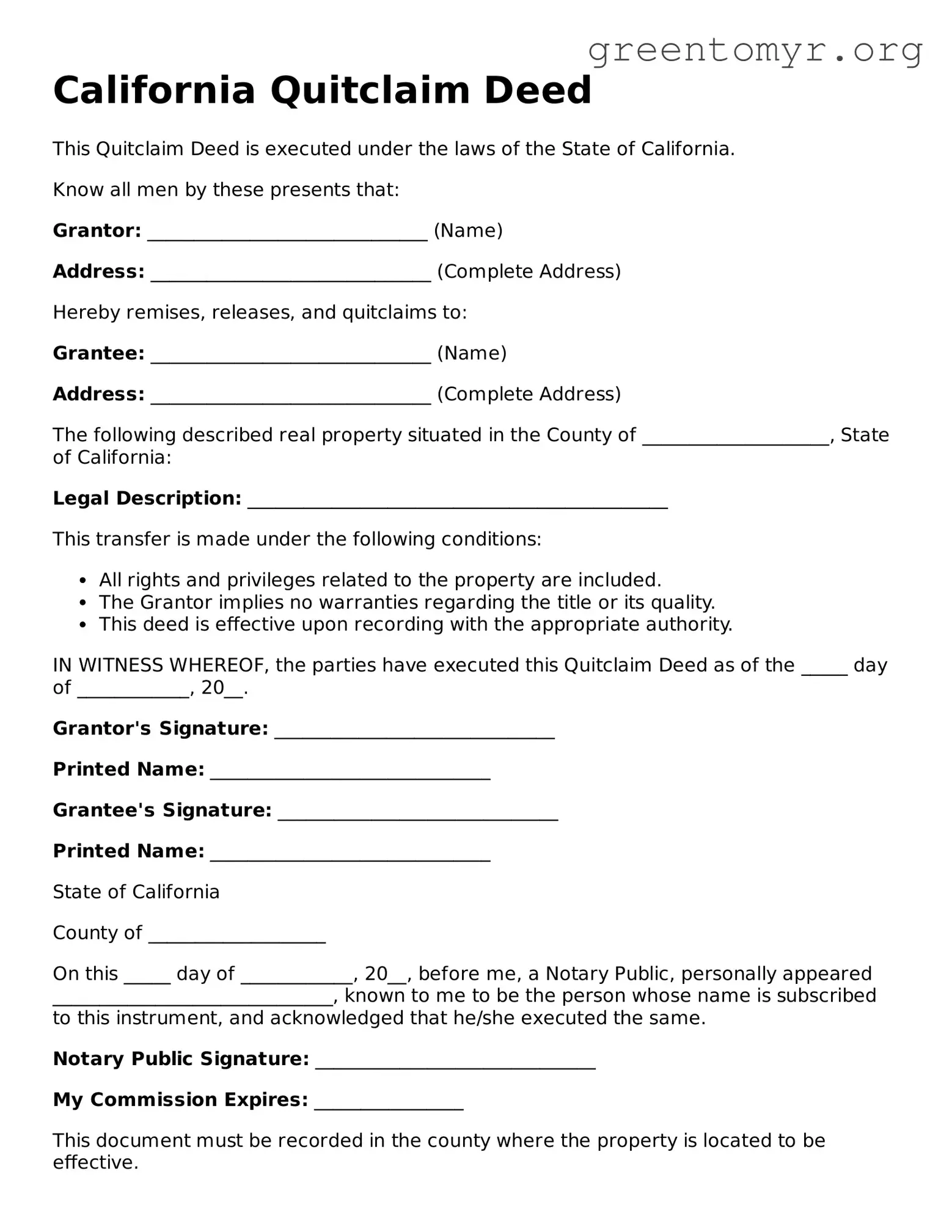California Quitclaim Deed
This Quitclaim Deed is executed under the laws of the State of California.
Know all men by these presents that:
Grantor: ______________________________ (Name)
Address: ______________________________ (Complete Address)
Hereby remises, releases, and quitclaims to:
Grantee: ______________________________ (Name)
Address: ______________________________ (Complete Address)
The following described real property situated in the County of ____________________, State of California:
Legal Description: _____________________________________________
This transfer is made under the following conditions:
- All rights and privileges related to the property are included.
- The Grantor implies no warranties regarding the title or its quality.
- This deed is effective upon recording with the appropriate authority.
IN WITNESS WHEREOF, the parties have executed this Quitclaim Deed as of the _____ day of ____________, 20__.
Grantor's Signature: ______________________________
Printed Name: ______________________________
Grantee's Signature: ______________________________
Printed Name: ______________________________
State of California
County of ___________________
On this _____ day of ____________, 20__, before me, a Notary Public, personally appeared ______________________________, known to me to be the person whose name is subscribed to this instrument, and acknowledged that he/she executed the same.
Notary Public Signature: ______________________________
My Commission Expires: ________________
This document must be recorded in the county where the property is located to be effective.
